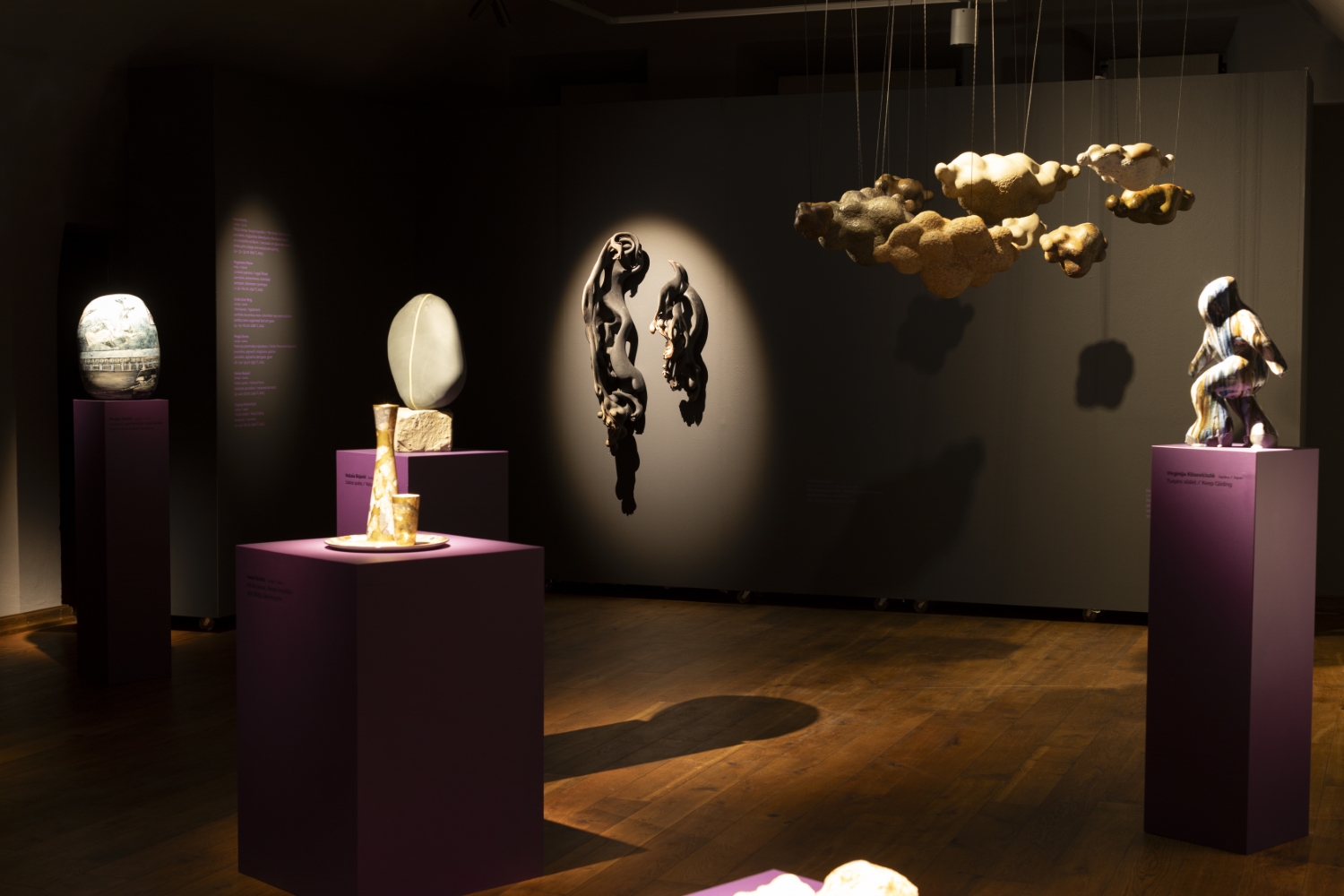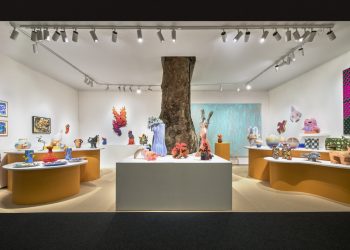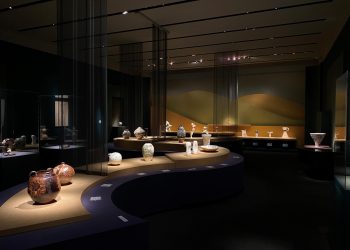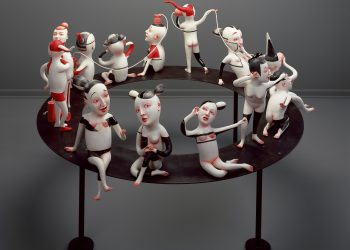- Interview with the curators
- Martinsons Award 2023
- Walking Together – Portuguese exhibition
- Self-Medication – Korean exhibition
- Agnė Šemberaitė – Fear Whispering: A Journey Within
- Sanita Ābelīte – Terra
- Dainis Pundurs – Visualising Gravity
- Kaspars Geiduks – Elements
- Elīna Titāne and Una Gura – 3+4
Agnė Šemberaitė – Fear Whispering: A Journey Within
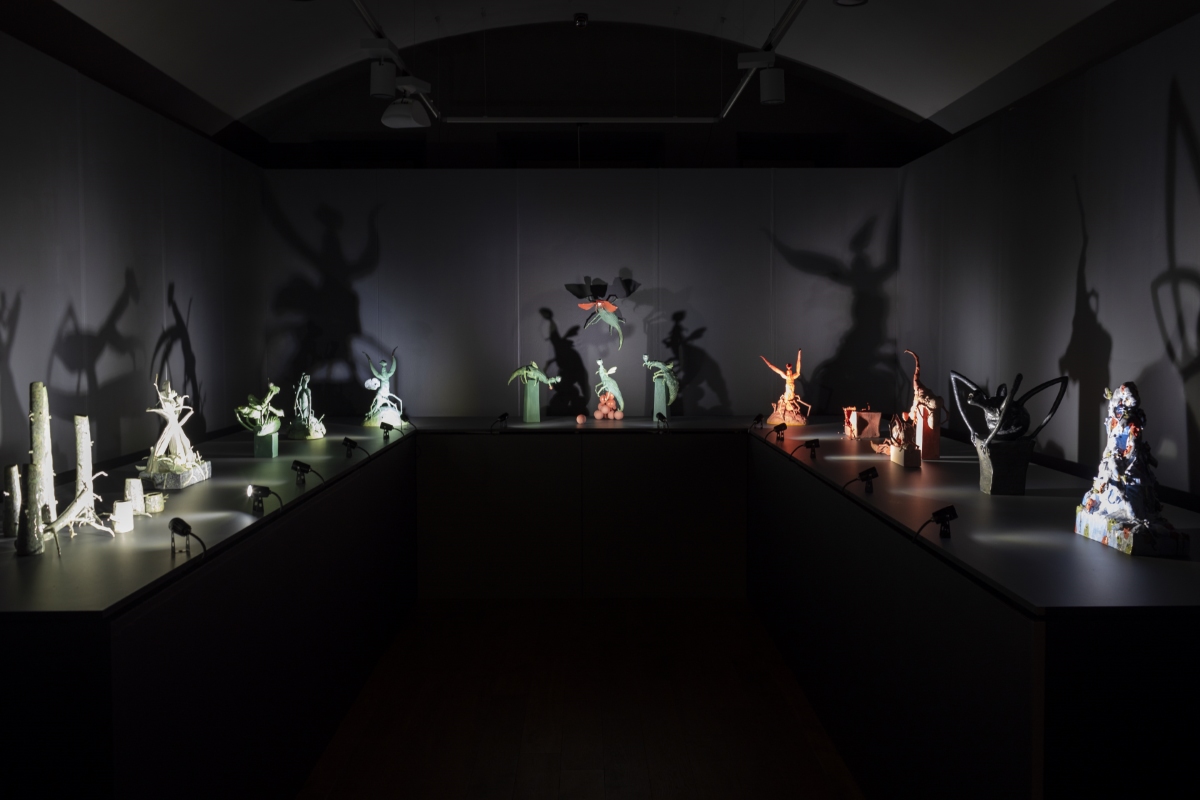
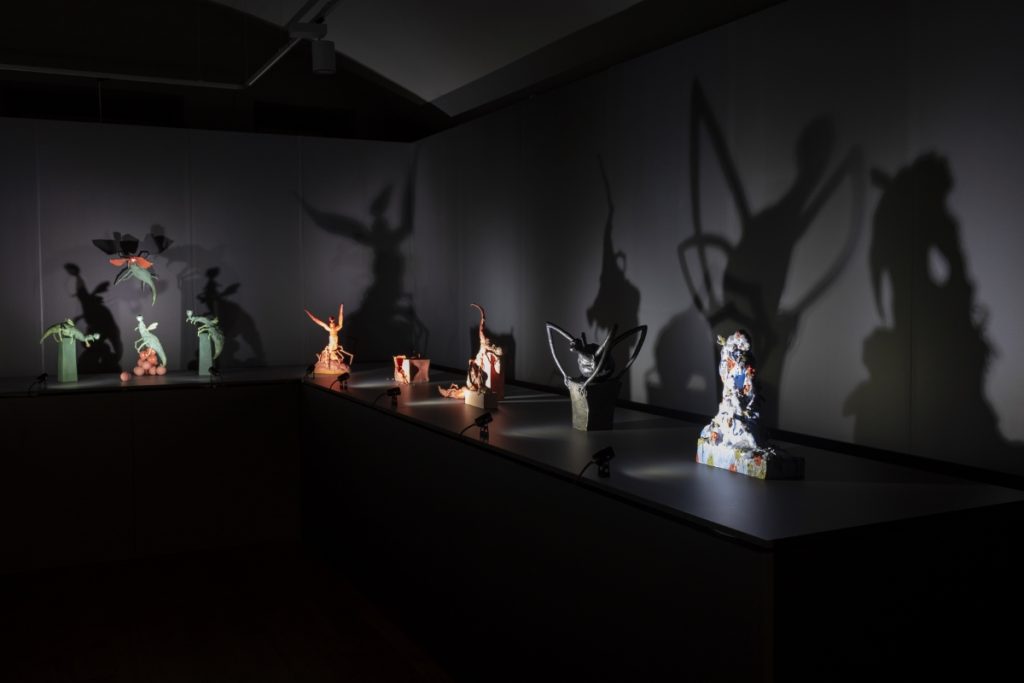
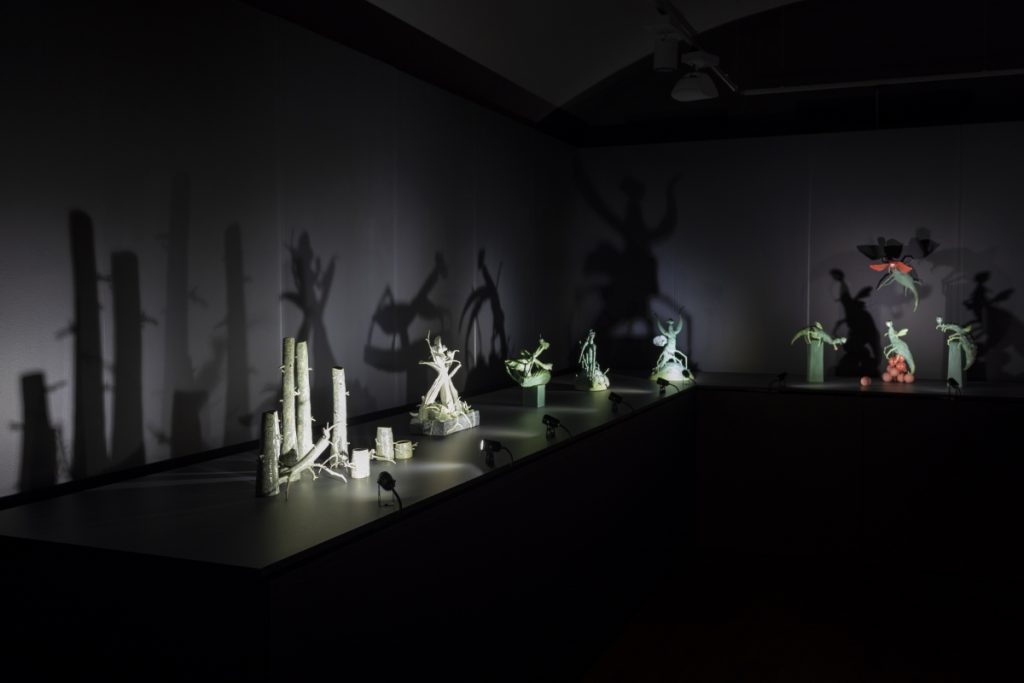
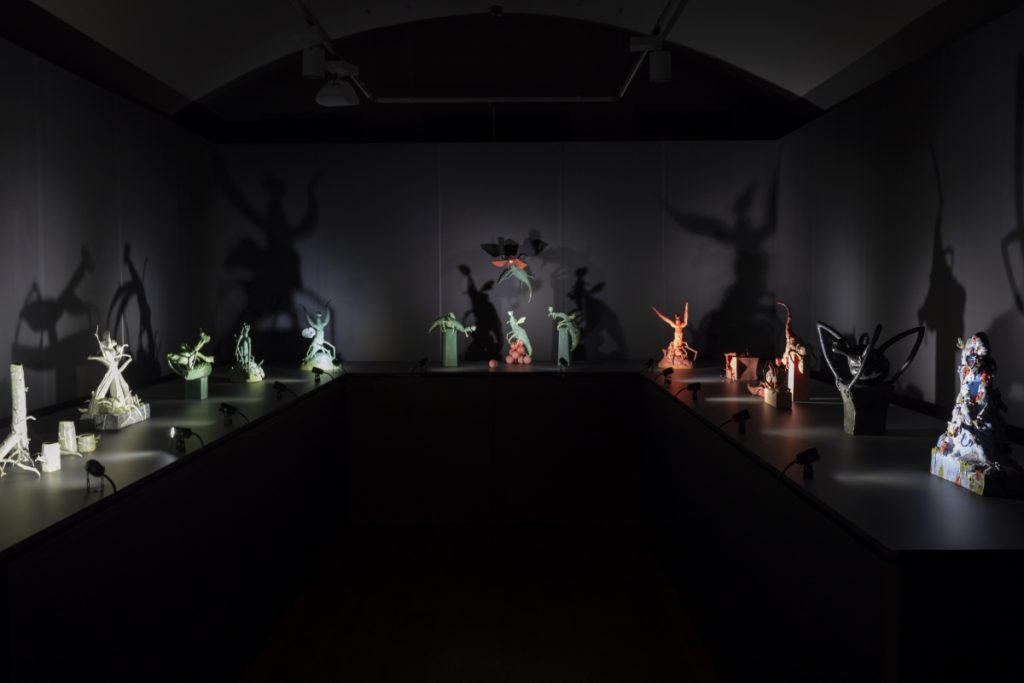
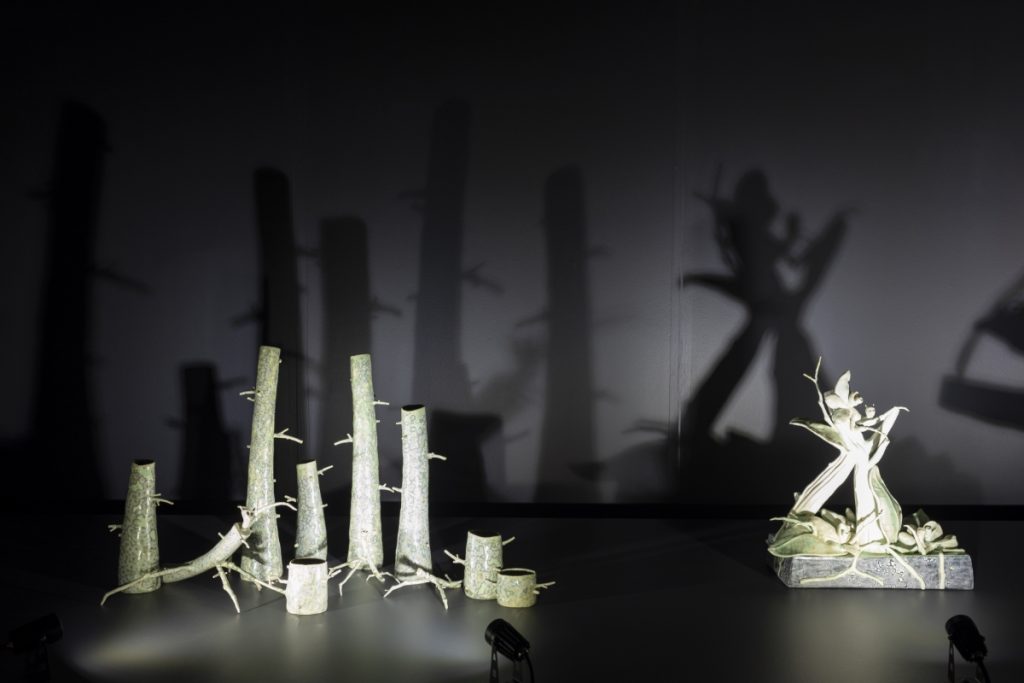
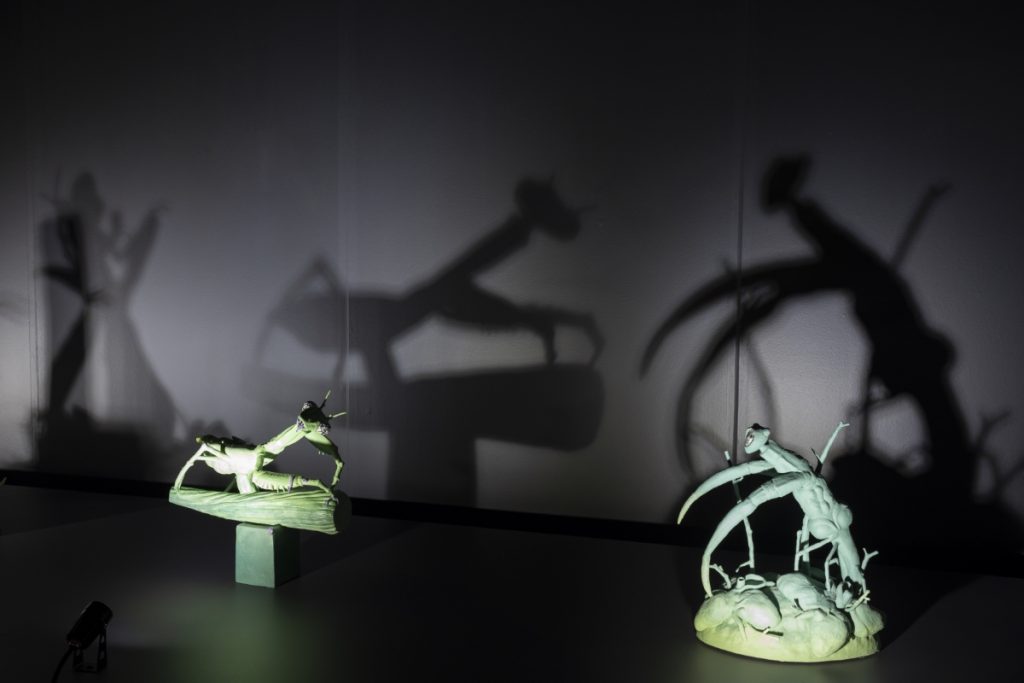
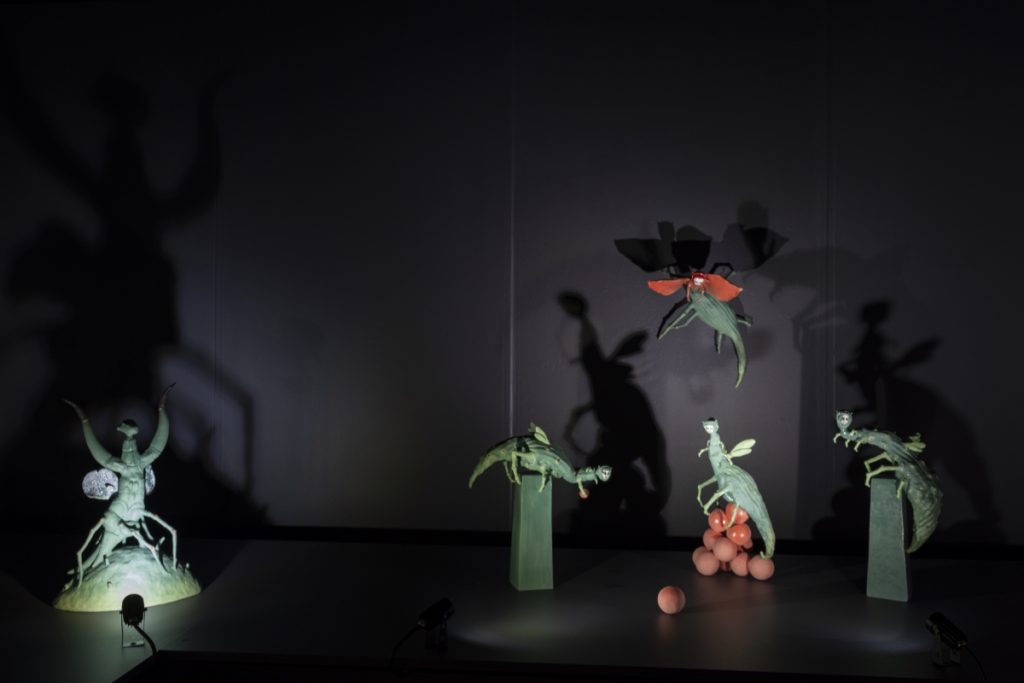
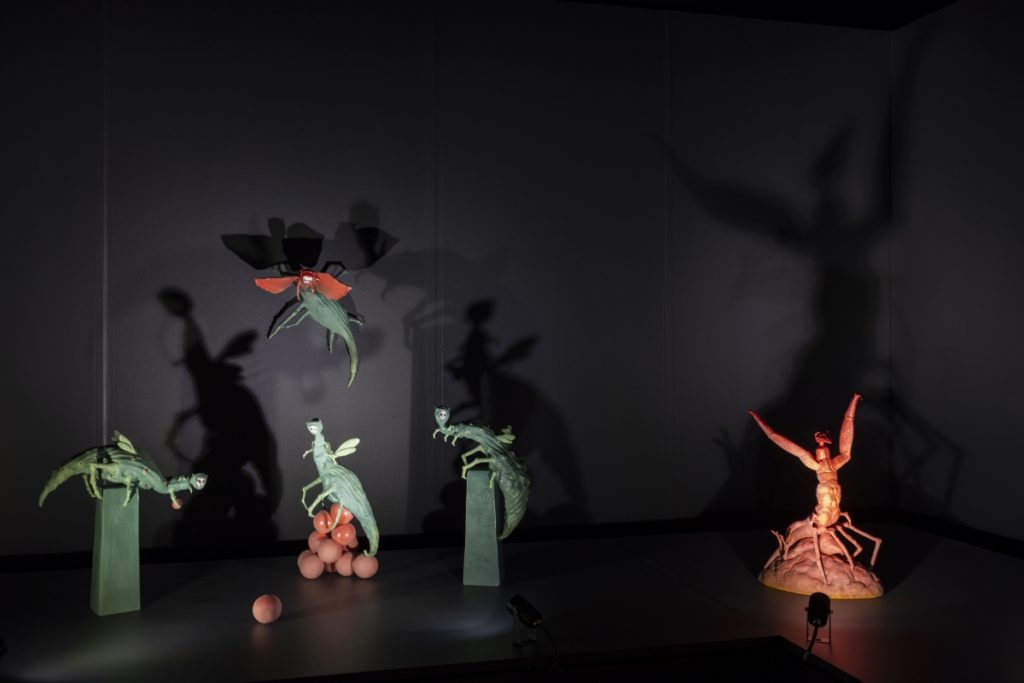
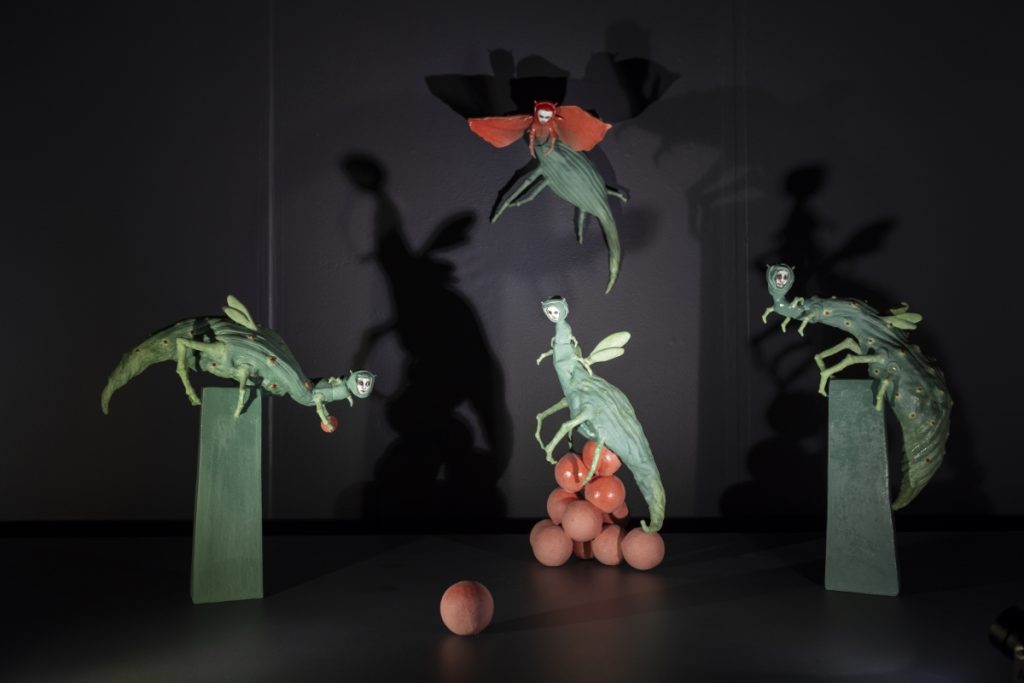
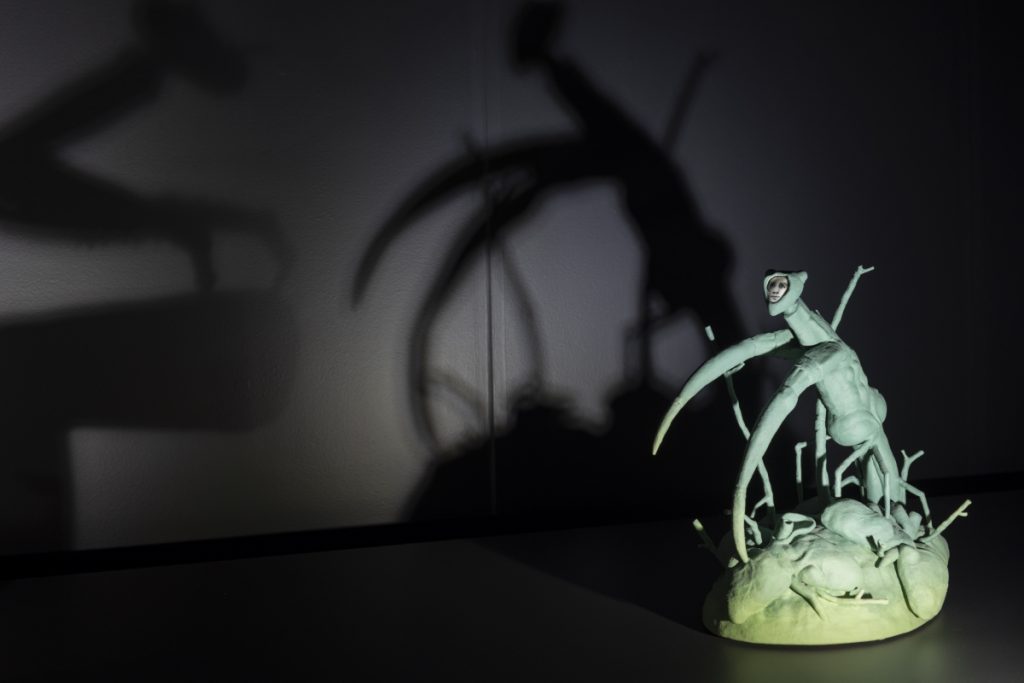
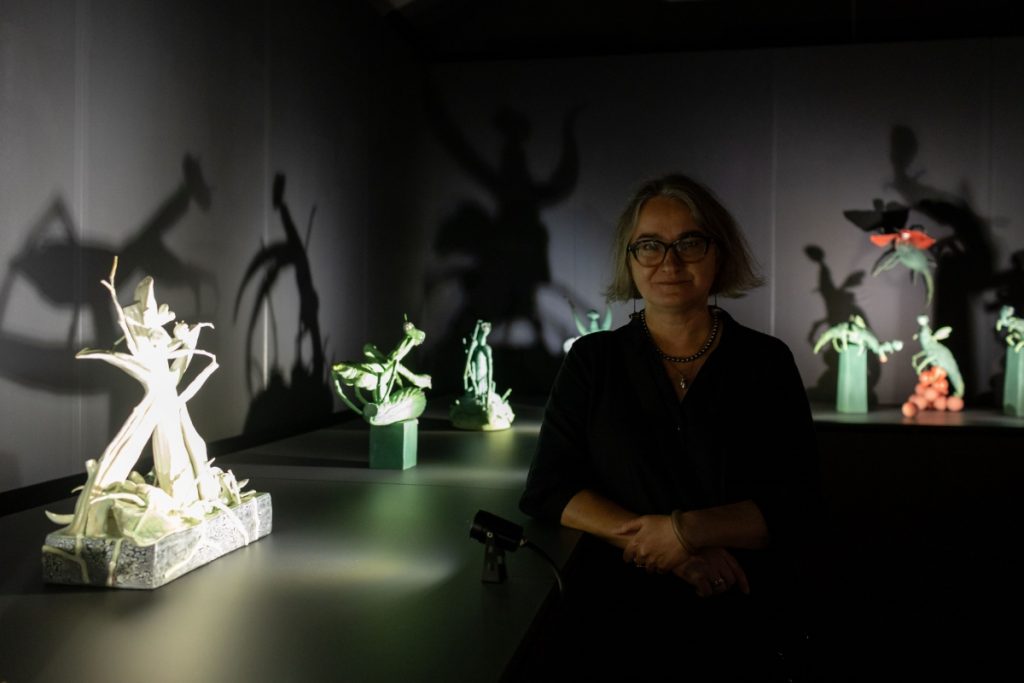
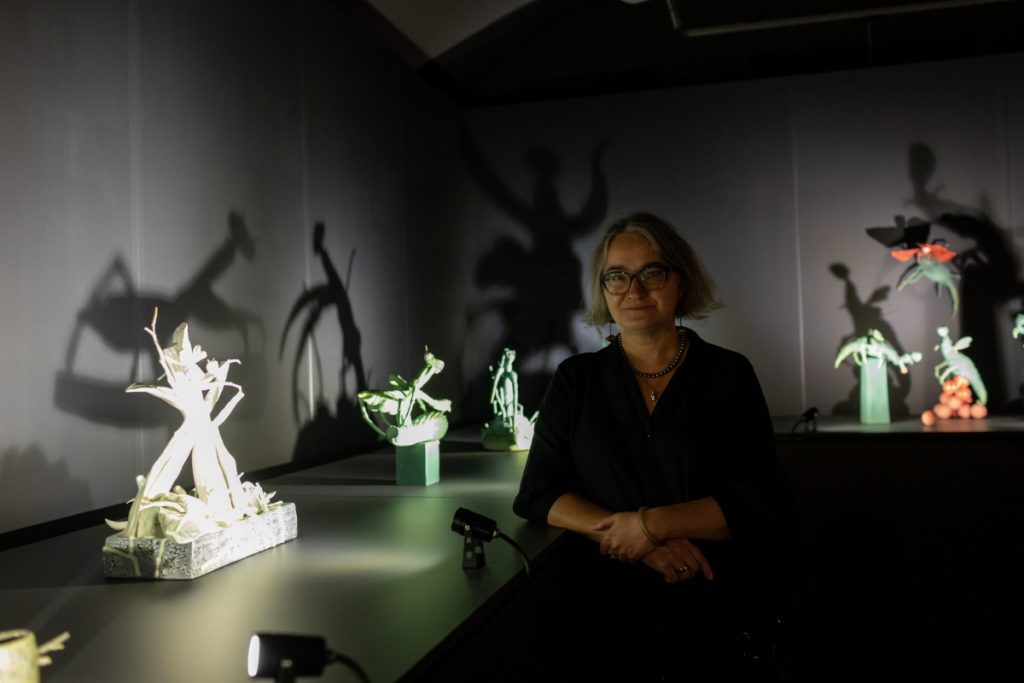
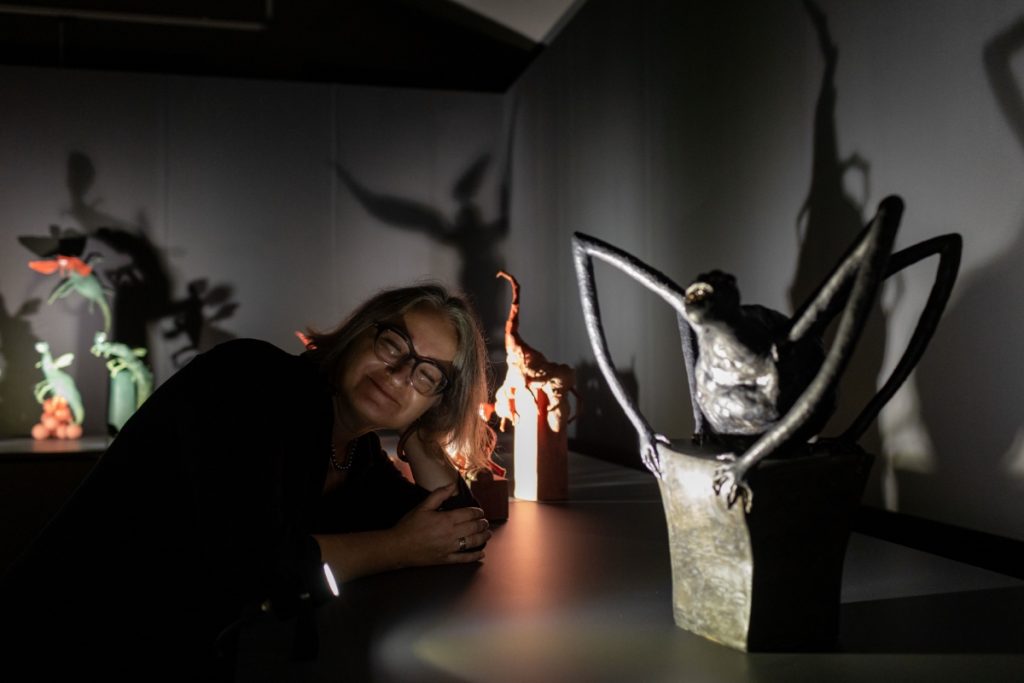
The mythical consciousness of humankind is full of paradoxes. No matter what text of ancient civilisation thought we choose to read, peace and war, like harmony and chaos, go hand in hand. Even in Buddhism or Hinduism, a perfect world is only possible with all its imperfections, and true peace requires acknowledging and accepting such flaws as suffering, duty and destruction.
Paradoxically, such ideas were often cited to justify various (even ostensibly holy) wars and conflicts. However, in the face of perpetual cataclysms and overwhelming global desperation, societies started waging wars within their psychological worlds. Certain ethnic groups believed only asceticism or complete isolation of an individual from society could protect them from painful inner experiences triggered by the environment. Yet that would also mean negating the very journey of life, where life is impossible without death as much as joy without pain.
Thus, even thousands of years later, fiction, cinema and other arts keep reflecting on the same existentialist idea that to know oneself spiritually, one must embark on a journey – a voyage fraught with fears, challenges and anxiety, referred to by Sigmund Freud as “the oceanic feeling” and by Karl Gustav Jung as “the archetypal depth”. Everything begins from the disintegration of the world – “light after death”, as Buddha put it – but this light can be both liberating and devastating.
Ceramicist Agnė Šemberaitė, Gold Prize winner at the Martinsons Award 2021, produces work that is strongly reminiscent of this archetypal journey of humanity. Though not always cosy or comfortable, her ceramics are undoubtedly full of recognisable symbols and puzzle elements. Interesting but highly complicated realities of life are covered with anthropomorphic images. Having spent many years concentrating on surreal ceramic sculptures suggestive of magical realism and mythical fairy-tale-like folklore, the author gradually shifted to more dramatic expression reflecting the principles of grotesque. Over the last five years, her ceramic characters – dwarves, little red riding hoods, queens, fairies, forest spirits and other magical creatures – have been increasingly replaced with representations of insects, plants and organs. It is as if Šemberaitė’s imagination and secularity speak about the personal and collective experience through multi layered optical lenses, intuitively building bridges between the Brothers Grimm, Viktor Pelevin, Franz Kafka and the intercultural mythological worldview.
The artist’s most recent exhibition, Fear Whispering at the Daugavpils Mark Rothko Art Centre, features sculptures from the aforementioned 2019–2023 period. Like all the works by Šemberaitė, they represent an exploration of human nature. Nevertheless, over the past five years, the ceramicist has been more focused on personal and global upheavals: war, diseases, destruction, the passing of loved ones, losses, existential threats, fear of death, struggling with this fear, attempts to tame it and survive in today’s complicated world of historical turmoil. With that, the theme of transformation and metamorphosis has also remained relevant, reflecting the artist’s perception of the cosmic balance discussed in ancient philosophies, such as the Ying-Yang duality. The mythical character and its inner search for peace in the face of life’s adversities and challenges have also persisted in Šemberaitė’s creative output.
What looks so beautiful and light in the artist’s work from a distance becomes repulsive once you come closer, illustrating a survival strategy known as mimicry. What seems frightening and ugly at first glance soon gets diluted with irony, comedy and flamboyant colours (the Insomnia cycle). Flowers become cancer cells, and bugs become flowers. A terrible sting with military and pandemic allusions is disguised in the colours of melting ice cream or cake frosting (Transformation: Nigredo, Albedo, Rubedo). Blood vessels in an open wound branch out like plant stems (Hurts), whereas tree trunks in the forest composition remind the viewer of mysterious creatures waiting to bite (the REM Sleep Stage cycle).
According to Joseph Campbell, a scholar of American mythology and religious studies, and John Weir Perry, a well-known psychiatrist, confronting one’s fears and tapping into one’s mythical and archetypal consciousness in spiritual or psychological healing is surprisingly similar to the experiences of shamans, saints, yogis and persons with schizophrenia. They all share dissociation while embarking on their dreadful spiritual journey; however, not all succeed in returning. “A schizophrenic breakdown is an inward and backward journey to recover something missed or lost and to restore, thereby, a vital balance,” Weir Perry wrote.
At times, the sculptures presented in Fear Whispering start resembling not only fairy-tale or sci-fi characters but also ritual objects or archaeological totems. Displayed in an installation that incorporates sound, light and other scenographic means, they encourage the viewer to undertake a journey into the mythical forest of their subconscious in order to confront and tame their archetypal fears. According to Šemberaitė, courage stems from great fear. “I’m not afraid, I’m absolutely not afraid,” keeps repeating a small child with each step forward into the darkest cellar.
Agnė Šemberaitė is a contemporary ceramicist based in Vilnius, chair and council member of the Ceramics Section at the Lithuanian Artist Association, exhibition curator, jury member for international competitions and a 1998 graduate from the Vilnius Academy of Arts. Throughout her lively exhibition record, ongoing since 1995, Šemberaitė’s work has stood out with its surrealist principles and figurative sculptural expression enhanced by graphic design elements and various firing methods, from an electric kiln to anagama, from reduction to raku. The artist’s work has been shown in the Baltics, Romania, Croatia, Finland, Poland, South Korea, China, Taiwan, Turkey, Belgium, Italy, Spain, the Netherlands and Denmark. Among her recent major achievements are the Gold Prize at the Martinsons Award 2021 during the international Latvia Ceramics Biennale, diplomas at the 6th and 7th Vilnius Ceramic Art Biennial in 2020 and 2022 and Second Prize at the 13th Baltic Contemporary Ceramics Exhibition “Spring” in 2019.
Text by Kamilė Pirštelytė Virbičianskė, art critic
- Interview with the curators
- Martinsons Award 2023
- Walking Together – Portuguese exhibition
- Self-Medication – Korean exhibition
- Agnė Šemberaitė – Fear Whispering: A Journey Within
- Sanita Ābelīte – Terra
- Dainis Pundurs – Visualising Gravity
- Kaspars Geiduks – Elements
- Elīna Titāne and Una Gura – 3+4


